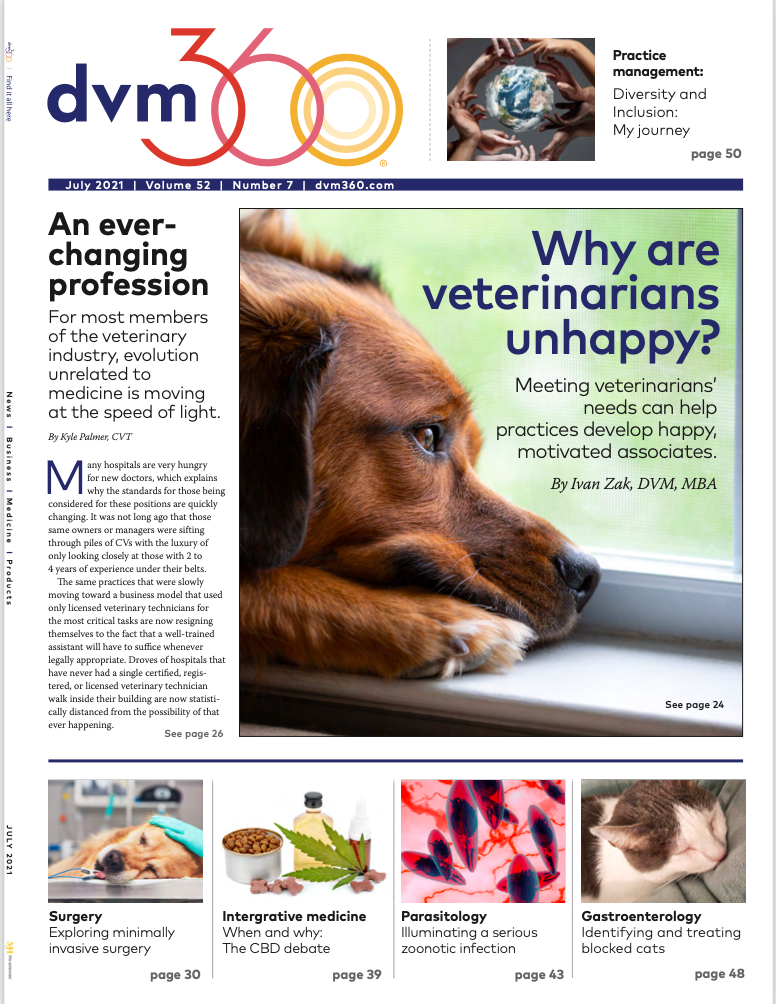Finding a safe place within the veterinary profession
One hospital administrator tells his story of self-acceptance and finding his “safe place” within the veterinary community by nourishing an inclusive and diverse environment that everyone can shine in. (Supported by BluePearl)
BluePearl hospital administrator Paul Miranda.

This is a story about a gay, Cuban, kid who spoke with a lisp and was taught to hide his true identity. This is also a story about a young professional who worked to unlearn falsehoods about the way the world worked, and who set out on a journey of self-acceptance, authenticity, and belonging within the veterinary community.
Setting the scene
Like many Cubans, my parents landed on the shores of Miami with, as they would often remind us, nothing to their name. They taught me the value of hard work, appreciation for the little things in life, and how to be a caring individual.
It was 1986, my mom called me Pablito Miranda Vargas Almira. I had a heavy Cuban accent and was forced by my school into therapy for a speech impediment. I had a heavy lisp and found it difficult to pronounce many words most difficult being girl. To me, girl was girrrrro! While correcting my impediment, I also learned that a lisp equated to gayness. From then on, I controlled my lisp to the best of my ability.
By the time I entered high school, I was in full control of my speech impediment and further learned to control the inner me. I tried to fit in as much as possible. All the while, I was learning to imitate others and hide the inner gay kid.
I attended the University of Pennsylvania where I mostly felt like an outsider. Looking back, I was goofy, wore my clothes way too big, and had no idea what the world was about. I did not fit the financial and cultural landscape of the typical “Penn kid.” It was here I learned about the LGBT Center and began exploring my gay identity. I learned about Armistead Maupin thanks to an amazing History professor.
“Don’t be too Hispanic or gay.”
In entering the professional world, I felt the need to fit a certain mold. I still recall receiving the professional advice, “Don’t be too Hispanic or gay if you want to be successful in life.” Surely, these 2 aspects of my identity could be career killers, even before starting one. Back then, there was no conversation around belonging and being true to oneself.
Many years later, in 2013, I joined BluePearl Specialty and Emergency Pet Hospital in New York City. At first, I struggled with my team interactions, attempting to balance professionalism, openness, and authenticity. I was not being myself and my team could pick up on it. It was not until I found a certain psychological refuge and allowed myself to open up that I began to flourish.
Finally, someone saw, heard, and appreciated me for all of my unique contributions, and I began to feel safe. It was my manager; they saw me. I began to feel like I belonged. I went from a feeling of gasping for air, to being given oxygen support. I felt like the burden was lifted and I could talk about anything. I could speak freely about my husband and our weekend travels. I was thrown a psychological safety net that today, has allowed me to succeed in my many roles and has helped me become a better manager to my hospital team.
In 2017, I relocated to Kansas City—still with BluePearl. Today, my team knows they can correct me when I communicate half in Spanish, half in English. They do not hesitate to tell me when I am not making sense and will speak up when they need more details. They feel safe to be themselves without judgment. That is what belonging means to me, and that is what belonging can do for a hospital team. It transcends you into a family, where all members can come as they are.
Creating safe spaces
When we create a safe place for our employees, we create a place where everyone can succeed. We create a space that allows everyone to be themselves. We create a place of belonging, inclusivity, and togetherness. We create a place where hospital administration, veterinarians, veterinary technicians, and paraprofessionals want to be, not just need to be. We create a better place for our patients and clients. And, perhaps, most importantly, we create a better profession for those currently within it and for those who follow.
When we open our doors to diversity and deliberately work to build more equitable and inclusive veterinary environments, great things happen. Let us not shy away from our differences, but instead, actively acknowledge and honor what makes each of us unique. Notice what makes me a person. Notice the color of my skin. Notice the way I speak. Tell me that you see me, that you recognize my attributes, and that I matter as a person, as a human being on this Earth.
Equity, inclusion, and diversity matter. The (EID) work I do as a member of BluePearl’s EI&D Council (whose team members represent the voices of more than 7,000+ veterinary associates nationwide), is vitally important. As we celebrate Pride Month, let us remind one another to really see the person beside you, and ask them, "Tell me more about yourself?"
Paul Miranda is a hospital administrator with BluePearl Specialty + Emergency Pet Hospital, supporting Operations in multiple hospitals throughout Kansas and Missouri. In addition, he works with numerous veterinary affinity groups in the Equity, Inclusion, & Diversity space, and is a member of BluePearl’s EI&D Council where he identifies, addresses, and advocates for sustainable and scalable change.
